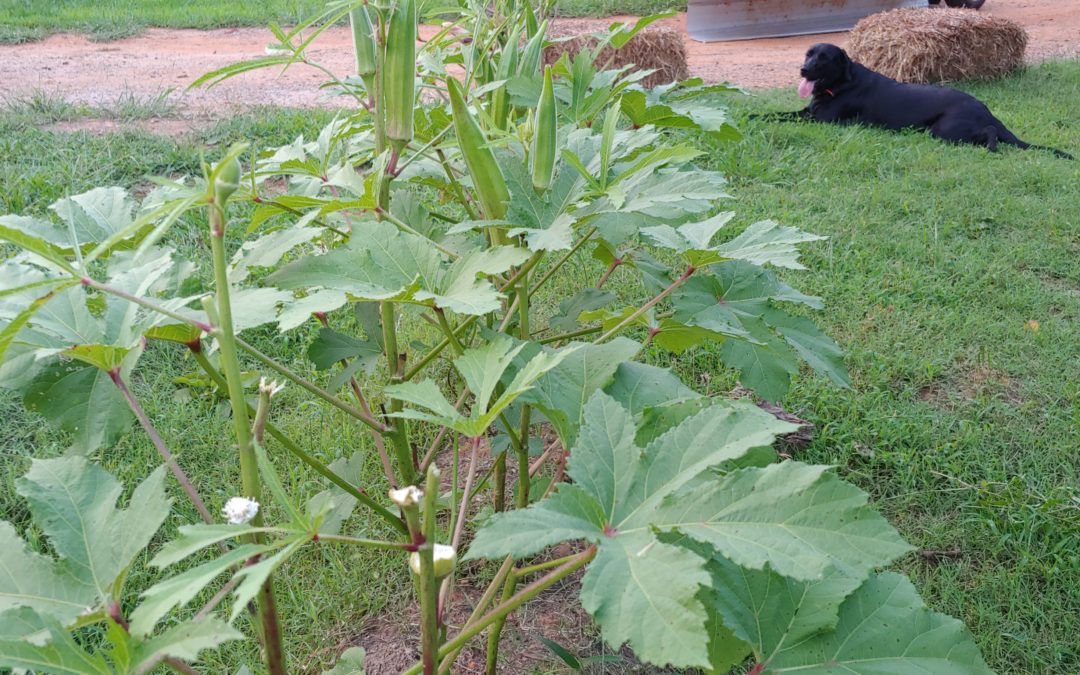There’s a lot happening in the news these days, and much of it has most thoughtful people feeling quite unsettled. It’s a time in history when we have to train ourselves to be especially discerning, while not allowing our “discerning” to consume us in worry. As the KJV (Matthew 6:34) reminds us:
“The morrow shall take thought for the things of itself.”
These are days to be intentional and vigilant: that we might be as wise as we can, to make good with the opportunities and challenges of the present day, and to trust God and His providence for the days before us.
So what does this have to do with that strangely shaped green vegetable called okra?
I wasn’t raised in the South, and okra was not well known in my native Wisconsin. When I moved to North Carolina, we had to learn Southern cooking. Okra, to me, was one of those menu items that people here fried until they couldn’t experience the taste or the texture of the thing itself. It was almost a “filler” to check the box: “I’ve had my veggies today.”
I’ve grown okra periodically in the years since, and I’m growing it again this summer. My son Joshua has been our family’s biggest fan, and he would fry it up for the rest of us to sample (from whatever he left uneaten). Our daughter Bekah likes to eat young okra raw. And now, to my amazement, her children seem to like it too. Amazing how we parents can influence what things our children accept as normal –
LOL.
I never cared much for okra. Eating it, I could hear the words of my grandpa who would give me vegetables like beets that I didn’t like. When I’d complain, typical of that generation, he’d say:
“Well, why don’t you just learn to like it?”
Beets I did indeed grow to love, mostly because Gramps convinced me to marvel at the color of a sliced beet pulled from the ground, and to pay attention to the “earthiness” of the flavor.
But as for okra, the consistency creeps me out and the taste is, well, interesting but not especially endearing. And besides, okra gets too big so fast that if left untended – even for just a few days – you might as well feed the husk-textured stuff to the deer.
Speaking of deer, they seem to really like my okra – stem and leaf and all. I intended to build a fence around our big garden this year to keep them away, but that priority got lost in the priority of other priorities. I lamented that fact with a neighbor and he gave me some “country boy advice.” He told me to periodically pee in the ditch through which the deer have to walk to get to my garden. THAT, he said, would keep them away. And it worked.
It worked, that is, until it rained two days in a row and I could not tend the garden for the next two days after that. When I returned, three long rows of okra had been mostly nibbled to the stalks. That prompted me to talk to another friend who’s setting up a hunting blind next to my garden for bow season this year. (I wonder if the venison will taste like okra?)
Meanwhile, I returned to my country boy ritual and in the past several weeks that okra has come fighting back. I have no idea how those plants are so PROLIFIC. They’re tenacious: so persevering. When I’m gardening in the evenings, musing about the day’s news and more, they speak to me:
“When the going gets tough, the tough get going.”
I started to read about okra, and discovered that it’s not “filler” after all. In fact, IT’S A SUPERFOOD. Superfoods are nutrient-rich foods considered particularly beneficial for people’s health and well being. So I started to experiment. First, I pickled it (not there yet). But then, I began to bury it in summer skillets with meat and other garden produce, and to prepare it solo in a pan with cheddar cheese and rosemary – and I think I’ve at last found my okra groove.
All this to say, I’ve turned a corner with okra. In fact, okra has become an emblem to me.
And that’s why I’m glad that I’ve learned to like it.
Make sharing easy!

Roast it. You’ll like it even better! Wash it, slice vertically once. One layer on a sheet pan. 400 degree oven…….20 minutes, I think. Watch it close, so it doesn’t burn.
We are first-time okra growers and have learned to love it “blackened”, i.e. seasoned with salt and fried in oil till brown/black and soft. It is yummy! 2nd best method is roasted.
No deer attacks yet. Our plants are getting huge. We may soon be able to use the stalks for fence posts.